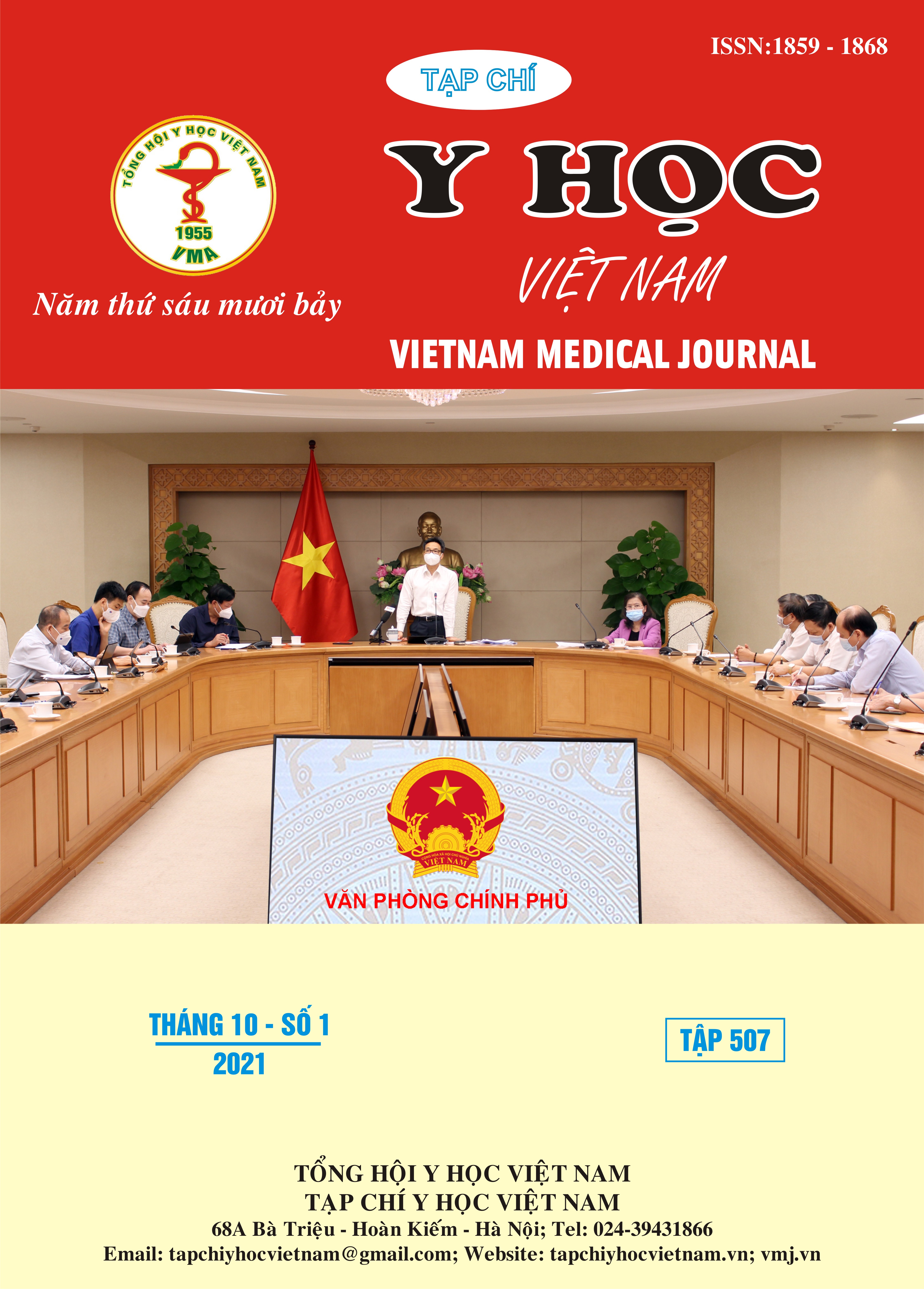EPIDEMIOLOGICAL CHARACTERISTICS, WEATHER FACTORS AND VECTORS OF DENGUE HEMORRHAGIC FEVER IN THANH TRI DISTRICT, HANOI, 2016-2020
Main Article Content
Abstract
Purpose: The study aimed to describe epidemiological characteristics of Dengue Hemorrhagic Fever and to analyse weather factors and vectors of Dengue Hemorrhagic Fever in Thanh Tri District, 2016-2020. Materials and Methods: The study conducted cross-sectional descriptive method with retrospective analysis in total of 4,300 records of dengue cases reported and recorded at the Thanh Tri District Health Center, Hanoi from 1stJan, 2016 to 31st Dec, 2020. Results: Every year, the number of dengue cases is highest in the age group from 16 to 45, with 1389 cases in the 16-30 age group and 1243 cases in the 31-45 age group. Among 4438 dengue cases, male (2260, accounting for 50.9%); women (2178 cases, accounting for 49.1%). The results of using spearman test show that the association between precipitation and the number of dengue cases in Thanh Tri district in the period 2016 - 2020 is positively related at an average level with r = 0.1, the association between temperature and the number of dengue cases were positively related on average with r = 0.2. The association between precipitation and BI aegypti dengue is significant with r = 0.6. The association between temperature and aegypti BI is significant with r = 0.6. Conclusion: In Thanh Tri district, 2016-2020, the number of dengue cases tends to be uneven by year. The highest dengue cases are from July to December, the lowest from January to April, the peak is in August. The association between BI aegypti and BI albopictus with the number of dengue cases is co-related variable on average. The association between rainfall and temperature with BI aegypti dengue is closely related.
Article Details
Keywords
Dengue hemorrhagic fever, Dengue Fever, weather factors, vectors, temperature, precipitation, humidity
References
2. NTL Trần Thanh Dương, Nguyễn Hoàng Long, Trần Thị Oanh, Phan Trọng Lân. Phân tích đặc điểm bệnh sốt xuất huyết Dengue giai đoạn 2009-2012 tại Việt Nam. Tạp chí y học dự phòng. 2015;8(135):106-112.
3. Cuong HQ, Hien NT, Duong TN, et al. Quantifying the Emergence of Dengue in Hanoi, Vietnam: 1998–2009. PLOS Neglected Tropical Diseases. 2011;5(9):e1322. doi:10.1371/ journal.pntd.0001322
4. Johansson MA, Cummings DAT, Glass GE. Multiyear Climate Variability and Dengue—El Niño Southern Oscillation, Weather, and Dengue Incidence in Puerto Rico, Mexico, and Thailand: A Longitudinal Data Analysis. PLOS Medicine. 2009;6(11):e1000168. doi:10.1371/journal.pmed.1000168
5. Rohani CA, Entomology M, Rohani A, et al. The effect of extrinsic incubation temperature on development of dengue serotype. In: 2 and 4 Viruses in Aedes Aegypti (L.). Southeast Asian J. Trop. Med. Public Health 2009; 942-950.
6. Minh An DT, Rocklöv J. Epidemiology of dengue fever in Hanoi from 2002 to 2010 and its meteorological determinants. Global Health Action. 2014;7(s4):23074. doi:10.3402/gha.v7.23074
7. Thông tin tinh hình và hoạt động phòng chống dịch bệnh sốt xuất huyết. Thông tin tinh hình và hoạt động phòng chống dịch bệnh sốt xuất huyết. Accessed March 8, 2021. https://vncdc.gov.vn/thong-tin-tinh-hinh-va-hoat-dong-phong-chong-dich-benh-sot-xuat-huyet-nd14621.html
8. Nguyễn Minh Hải, Hoàng Đức Hạnh, Nguyễn Nhật Cảm, Đặng Thị KimHạnh. Một số đặc điểm dịch tễ học bệnh sốt xuất huyết Dengue ở Hà Nội giai đoạn 2006 - 2011. 2013;23(2):58-65.
9. Do TTT, Martens P, Luu NH, Wright P, Choisy M. Climatic-driven seasonality of emerging dengue fever in Hanoi, Vietnam. BMC Public Health. 2014;14(1):1078. doi:10.1186/1471-2458-14-107.


